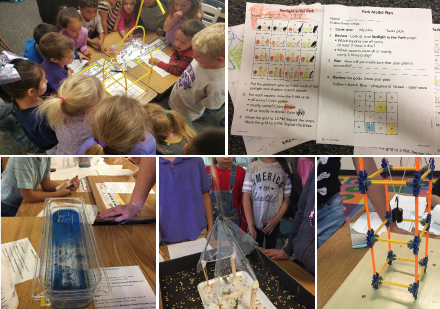K-5 STEM Grant Puts ‘the Real World’ into the Classroom
Yerington Elementary was looking for a STEM program that would align seamlessly with its existing curriculum and instruction while also providing multiple cross-curricular opportunities for students.
“As a K-4 science teacher, I was struggling to come up with engineering challenges and projects that would address the NGSS expectations, be engaging for all students, and truly utilize the engineering design process while addressing real-world problems,” explains Lynn Jeka, Yerington’s STEM Specialist.
Yerington received a K-5 STEM grant to purchase STEM in Action, on the list of the Nevada STEM Advisory Council’s Recommended STEM Programs. Students and teachers alike love the increased focus on STEM.
“They are easy to implement, all of the materials you need are right there, and the challenges address real-world situations – my students feel as though they are part of a much bigger community, much more far- reaching than just doing a classroom project,” Jeka says. “I have had many students tell me that the STEM lessons are their favorite part of the week.”
Teaching STEM has helped increase student engagement and excitement about learning. 2nd grade teacher Tori Kniesteadt reports, “During my last STEM lesson one of my students who is the hardest to keep engaged was completely dedicated to his plan and model of a structure to prevent beach erosion. He was following his plan, taking measurements, and even smiled for a moment. I asked, ‘Do you like STEM?’ and he said, ‘Yes!’ It’s great that our STEM in Action kits are able to reach the sometimes ‘unreachables’.”
Research finds that early exposure to STEM, especially for girls, makes children more likely to succeed in science and pursue STEM fields in college. OSIT awarded K-5 STEM Grants to innovative applications that increase the use of evidence-based, hands-on, experiential STEM learning in grades K-5.

3rd grade students were presented with the issue of hail storms destroying a farmer’s crop of apples. They had to test a variety of materials and roof structures to determine the best design to protect trees from the effects of weather disasters while staying within budget constraints.
4th grade students investigated different technologies that are used to protect buildings in earthquake-prone areas. They had to design and test different technologies while staying within the budget constraints.
